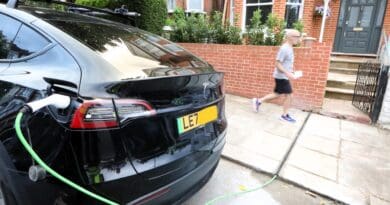Talk is cheap but we need action over charging accessibility
Making charging accessible for all is more than a box-ticking exercise, says Stuart Douglas, managing director of PoGo Charge
is rapidly becoming the new flagpole around which some businesses within our sector are keen to pin their colours. It is, in a sense, fast becoming the new ‘green’.
Much like organisations have felt it important in the past (and currently) to stress their environmental credentials, as a way of gaining a competitive advantage, now they are leaning into accessibility to give them a point of difference, and potentially seize the moral high ground.
The challenge with accessibility, however, is that it can mean different things to different people. There are also different ways in which it is being measured and assessed, which is leading to understandable confusion and disappointment within the industry and amongst drivers.
Widening the view
While to some, accessibility is seen only through the comparatively narrow lens of a Blue Badge, I think it is much bigger than that. It shouldn’t be about paying lip service to best practice or ticking a box for regulatory compliance to a specific Guideline or Act, simply to put a logo on a website. I see accessibility rooted in delivering an exceptional customer experience that everyone, regardless of their individual needs, can enjoy.
Of course, charging bays need to be physically accessible. We always strive to give all drivers more space, not less, wherever we can and where the environment and local conditions allow. That means more room alongside the parking bays to get in and out of the car without the fear of little bumps and scratches. More room to move around comfortably, with prams, shopping bags, and mobility aids. And more room to charge without obstructions. More room means less stress, which will be the benchmark for all our bays on a site, and not just one.
But to my thinking, accessibility should not be limited to the physical space. It’s also about choosing the most accessible technology. For me this means chargers with screens that are at the right height and the right size, that can be easily read from a seated position and where your instructions are clear with high-contrast text.
It also means chargers with long cables, long enough for any type of electric vehicle. And industry leading cable management systems to take the weight off your mind because we know that ultra-rapid cables can be heavy and cumbersome – for all of us.
And it’s about accessible payments, and payment terminals that are in easy reach. It’s about enabling customers to use contactless cards or contactless payment (via mobile wallet, PoGo mobile app, our partner apps like Electroverse and Paua, or via webpay), so you can always choose whatever suits you best.
Building confidence
To build confidence not just in our own network, but in all publicly available charging, there needs to be a better understanding of what is and isn’t possible.
While the desire to create fully accessible spaces is always there, it is not always within the gift of the charge point operators to achieve it. Not every site allows for full accessibility, perhaps because of existing bollards or kerb structures, for example, but what we should all promise is to be informed by guidance from PAS 1899:2022 and ChargeSafe, to incorporate their requirements into the design areas that are within our control.
To me, accessibility is something to be delivered for the many, not the few, and it is a conversation that needs to be had with greater transparency and honesty to protect the reputation of our industry, and our own individual companies. It is not about scoring points over the competition; it is about making the charging experience better, safer, and more enjoyable for all.






